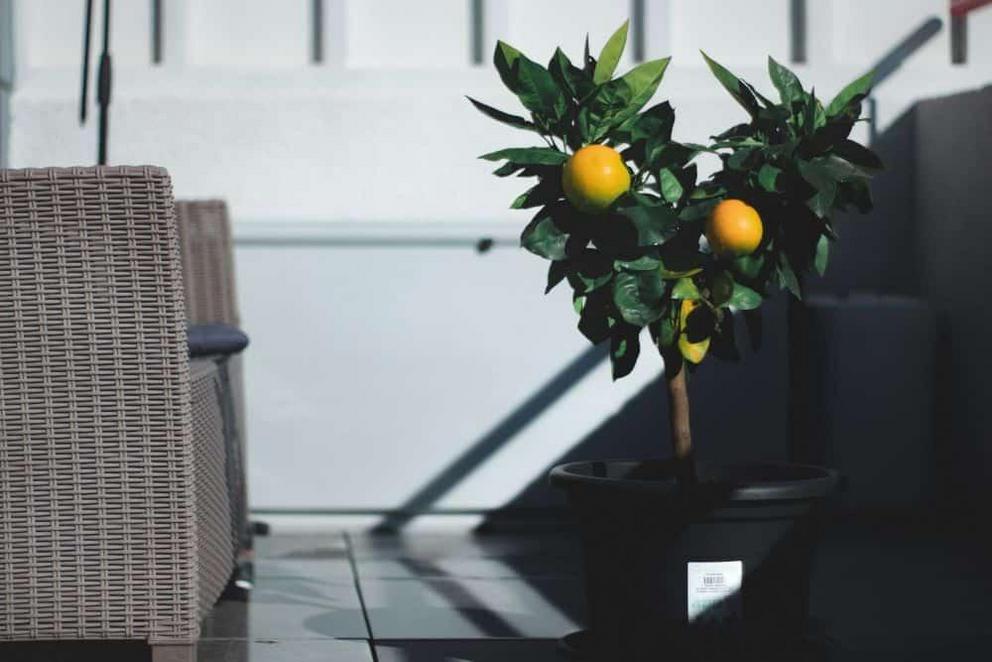How to make potting soil for citrus trees
With vibrant fruits offset against lustrous green leaves, a citrus tree adds a dose of exotic flair to your patio or garden. As long as you can provide enough sunlight and warmth during the year, nothing prevents you from growing citrus trees at home. A major advantage of growing these ornamental trees is that they thrive in containers, allowing you to move them around to maximize their exposure to sunlight and fit even the tiniest space.
Another important aspect of caring for these plants are their soil requirements. Citrus trees prefer light, slightly acidic, and well-drained soil. You can find commercial potting mixes well suited to citrus trees, but making your own is simple, and you likely already have some of the supplies.
There are easy potting soil recipes that your citrus tree with love. Whether lemon, lime, orange, kumquat, or other varieties, you can find one to fit your needs.
What Makes a Good Potting Soil For Citrus Trees?

The most important quality your citrus tree’s soil should have is good drainage. Citrus trees are prone to root rot, a fungal infection that occurs when heavy, wet soil festers around the root system. A tree suffering from root rot will appear stunted and limp. Other signs of root rot on a citrus tree can include oozing sap from the bark, peeling, browning or yellowing of leaves, and any fruits that manage to form will likely drop off the branches before ripening.
To prevent root rot, make sure your citrus tree’s potting soil contains elements that promote airflow and drainage. Perlite and vermiculite are two effective and widely available options.
The size of your pot also matters when it comes to controlling drainage. Avoid using a pot that is much too large for the current size of your tree, as the water may take too long to drain out. This may mean you have to repot your tree several times as it grows, but it will go a long way towards preventing waterlogged roots.
Finally, citrus trees like soil that is just slightly acidic, with a pH below seven. This helps to dissolve nutrients in the soil so that they can be absorbed by the tree’s roots.
Your potting soil should contain organic material that supports a healthy pH balance. Many commercial mixes contain peat moss, which imparts a natural acidity. However, if you are concerned about the environmental impact of peat, there are plenty of alternatives. Composted coffee grounds, wood fiber and coconut coir can be used in place of peat moss.
Alternatively, add organic materials that have a fairly neutral pH, such as compost. These will still help to nourish your tree while further aerating the soil.
What You’ll Need

You’ll need a few basic supplies to prepare your potting soil.
- A pot or other container
- A bucket (for mixing)
- A trowel
- A watering can
- Screen mesh
- One-third sterile regular potting mix
- One-third perlite or vermiculite
- One-third organic matter
- Bark mulch or gravel (optional)
Step 1: Mix Your Potting Soil

Time to grab your pot! Citrus trees tend to need a larger pot, sometimes up to 36 inches wide. You can choose to cover your container’s drainage holes with screen mesh. This allows water to drain but keeps the soil itself in place.
Now, in your mixing bucket, add the regular potting mix, perlite or vermiculite, and organic matter, thoroughly combining everything with your trowel. It’s important to get the right measurements when making your potting soil because you don’t want it to be too dense. A good rule of thumb is to use equal parts of each ingredient.
Step 2: Plant Your Tree

Partially fill the container in which you will be growing your tree with your homemade potting soil. Place your tree at the same depth it was growing in its previous container. The tree’s base should be three or four inches below the rim of the pot in order to accommodate water.
Fill in the pot with the rest of your mix, stopping just at the base of the tree. The root flare at the bottom of the trunk should still be exposed, as it needs access to oxygen. Gently pat down the soil and give the pot a thorough watering.
If you wish, you may cover the soil with a light layer of bark mulch or gravel. This not only looks attractive but improves surface drainage by preventing water from pooling around the tree.
Keep Your Citrus Tree Happy
Mixing up a great batch of potting soil is an important step in setting up your citrus tree for a long, healthy life. If you think it needs a boost, feed it lightly during the growing season with an fertilizer for acid-loving plants, mixed to half strength. Generally, if your tree’s leaves are looking healthy and glossy, it’s well nourished.
Young citrus trees need frequent watering. Give them a good drink whenever the soil feels dry until roughly an inch below the surface.
Finally, remember that most ornamental citrus trees prefer proper potting soil, frequent visits from pollinators, and adequate sunlight. Hopefully, if you take proper care of your tree, you’ll be able to enjoy the fruits of your labor! If its leaves are vibrant and it’s growing, you’re on the right track, and you’ll likely be enjoying your tree’s sweet fragrance and bursts of vivid color for years to come.

